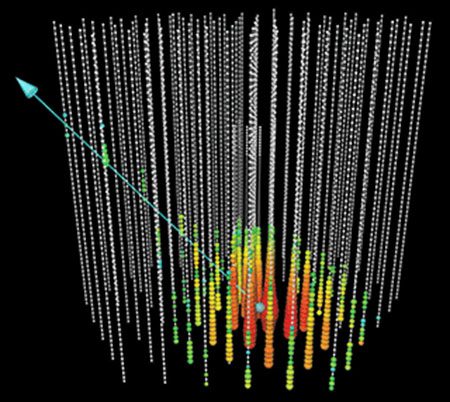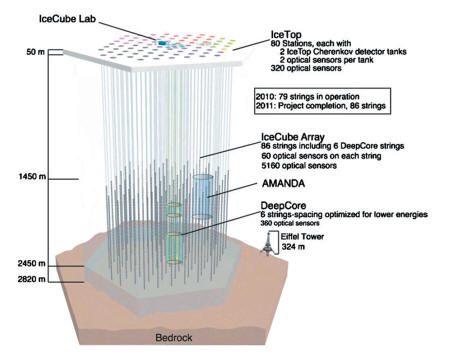|
|
|
As protons and nuclei are accelerated, they interact with gas and background light near the source to produce subatomic particles such as charged pions and kaons, which then decay, emitting neutrinos.
We report on results of an all-sky
search for these neutrinos at energies above 30 TeV in the cubic
kilometer
Antarctic IceCube observatory
between May 2010 and May 2012.
This search is primarily sensitive to neutrinos from all directions above 60 TeV, at which the lower-energy background atmospheric neutrinos become rare, with some sensitivity down to energies of 30 TeV.
Penetrating muon backgrounds were evaluated using an in-data control sample, with atmospheric neutrino predictions based on theoretical modeling and extrapolation from previous lower-energy measurements.
With the current level of statistics, we did not observe significant clustering of these events in time or space, preventing the identification of their sources at this time.
Within our present knowledge, the directions, energies, and topologies of these events are not compatible with expectations for terrestrial processes, deviating at the 4σ level from standard assumptions for the atmospheric background.
These properties, in particular the north-south asymmetry, generically disfavor any purely atmospheric explanation for the data.
Although not compatible with an atmospheric explanation, the data do match expectations for an origin in unidentified high-energy galactic or extragalactic neutrino accelerators.
Full version
|



